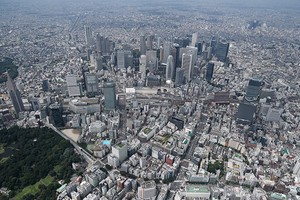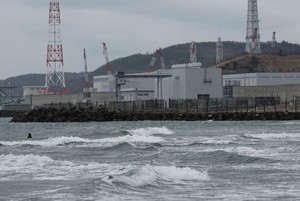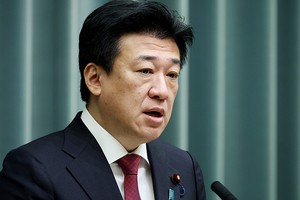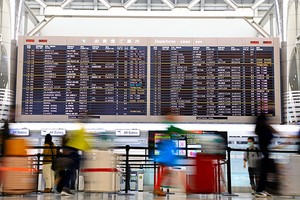By HIROSHI ONO/ Staff Writer
July 12, 2024 at 06:00 JST
OKAYAMA—Monorails are a common sight in the Setouchi region, hauling tangerines up and down orchard-covered slopes, but these contraptions may soon be put to work on Earth’s mightiest mountain range.
The farm-use monorail system is being eyed for use in the construction of hydraulic power plants in the Himalayas.
In Nepal, where nearly 80 percent of the land is mountainous, construction and farming on precipitous slopes still rely on human labor and livestock.
A group of four representatives from Nepal visited Nikkari Co.’s headquarters in Okayama's Higashi Ward on June 17.
At the company’s test course, they observed a large disaster-prevention monorail haul a 2-ton weight up a 45-degree angle. They also test-rode a monorail equipped with passenger seats to experience the ride.
Sailesh Kandel, president of an importer, said that Nepal is making an all-out effort to develop hydraulic power plants that can take advantage of the runoff and steep mountainsides of the Himalayas.
Kandel is considering using the monorail system to transport materials and workers through the precipitous terrain.
The development of farm-use monorails began when a tangerine farmer in Ehime Prefecture approached Nihon Karitoriki Kogyo, Nikkari’s predecessor, asking the company to build an agricultural transport system for use on steep slopes.
The terrain was too difficult for farmers to transport heavy goods themselves, while installing a cable system would require large-scale construction in areas with little space.
In 1966, the company developed an agricultural monorail system called the Monorack.
The design combines a general-purpose engine with a track in which straight gears (racks) are welded to square tubes.
The Monorack was capable of ascending a hill at a 45-degree angle and, because its track was less than one meter wide, it could be installed with minimal need to cut down trees.
With support from the central government, the Monorack became wildly popular and widespread.
Said to be the first of its kind in the world, an early model of the Monorack produced in or around 1970 was included in the Mechanical Engineering Heritage list by the Japan Society of Mechanical Engineers.
A model that can transport up to three tons was later developed in response to growing demands for monorails to carry heavy machinery, workers and other materials for restoration work after landslides.
Nikkari is using a project funded by the Japan International Cooperation Agency to introduce the monorail system to Nepal.
The Nepali group also visited the Hiroshima City Forest Park in Hiroshima to view an electric sightseeing monorail and Shimane Prefecture to see a disaster-prevention monorail used at an expressway construction site.




















A peek through the music industry’s curtain at the producers who harnessed social media to help their idols go global.
A series based on diplomatic documents declassified by Japan’s Foreign Ministry
Here is a collection of first-hand accounts by “hibakusha” atomic bomb survivors.
Cooking experts, chefs and others involved in the field of food introduce their special recipes intertwined with their paths in life.
A series about Japanese-Americans and their memories of World War II